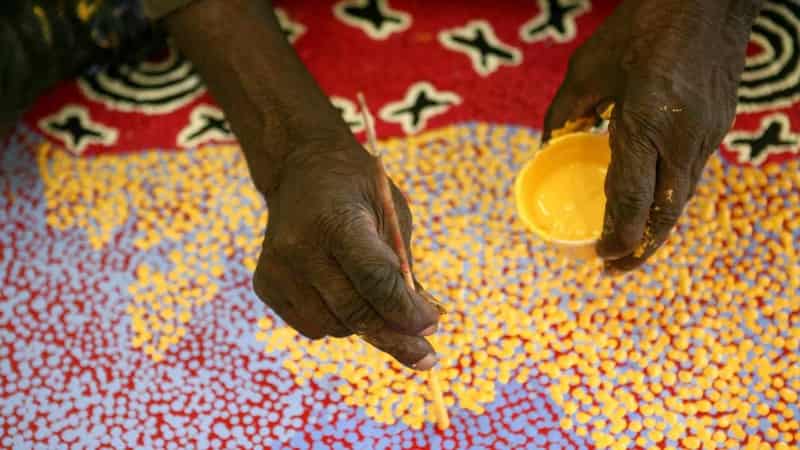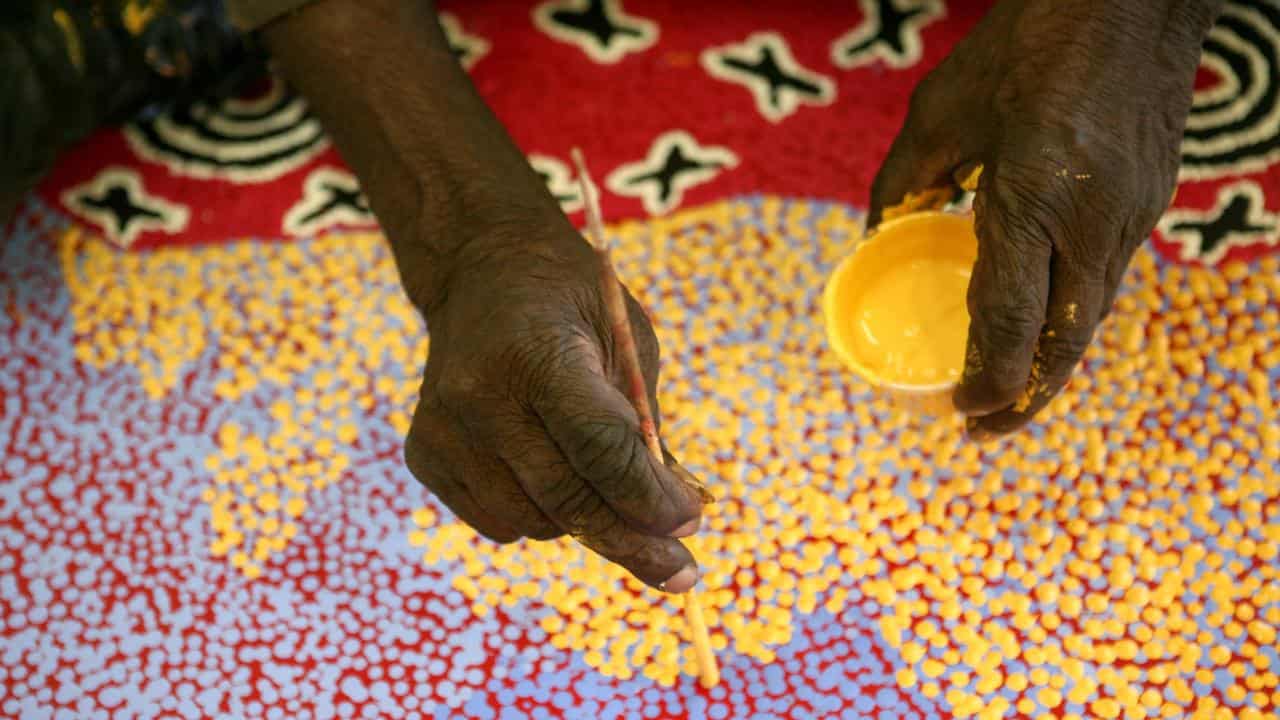
What was claimed
School teacher Geoffrey Bardon invented Aboriginal dot painting in 1971.
Our verdict
False. Dot painting has been part of Aboriginal culture for thousands of years.
A viral social media post tries to diminish Aboriginal culture by claiming the history of many practices are recent.
Its leading claim is dot painting was invented in the 1970s by white school teacher Geoffrey Bardon, who taught the style to Indigenous people.
This is false. Experts told AAP FactCheck this and the post's other claims were at best dubious and most were plain wrong.
The Facebook post (screenshot here) titled "Aboriginal History" is being shared widely ahead of the voice referendum - as seen here, here, here, here, here and here.
"Dot painting was invented in 1971 by Geoffrey Bardon who then taught the style to aborigines. There are no dot paintings in caves," the post states.
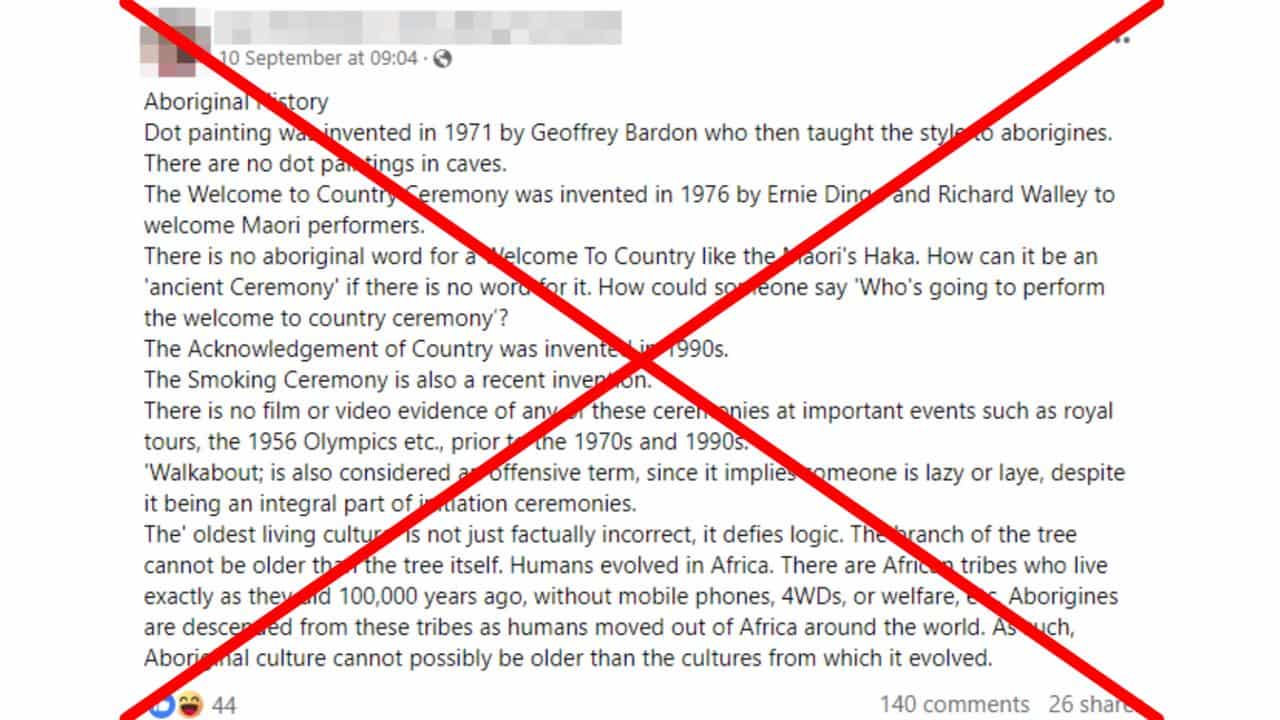
"The Welcome to Country ceremony was invented in 1976 by Ernie Dingo and Richard Walley to welcome Maori performers."
It goes on to make a number of other claims including that there is no Indigenous word for a Welcome To Country and that the smoking ceremony is a recent invention.
Bardon, a school teacher and painter, spent 18 months in the remote Aboriginal settlement of Papunya, west of Alice Springs in the early 1970s.
He is widely recognised as being instrumental in nurturing the early Western Desert Aboriginal art movement.
But experts in Aboriginal history and frontier culture told AAP FactCheck it was wrong to claim Mr Bardon invented dot painting.
Mark McKenna, a history professor at the University of Sydney, said Mr Bardon did not invent dot painting, rather the technique had not existed on canvas until his encouragement.
"Dot painting had been used for thousands of years by Aboriginal people across Australia, especially on their bodies and in the sand for ceremonial purposes, and sometimes on rock walls in the painting of Dreamtime figures and symbols," Professor McKenna said.
"Dot paintings on canvas also drew directly on the artist’s knowledge of these traditional ways of painting. The author's claim is false."
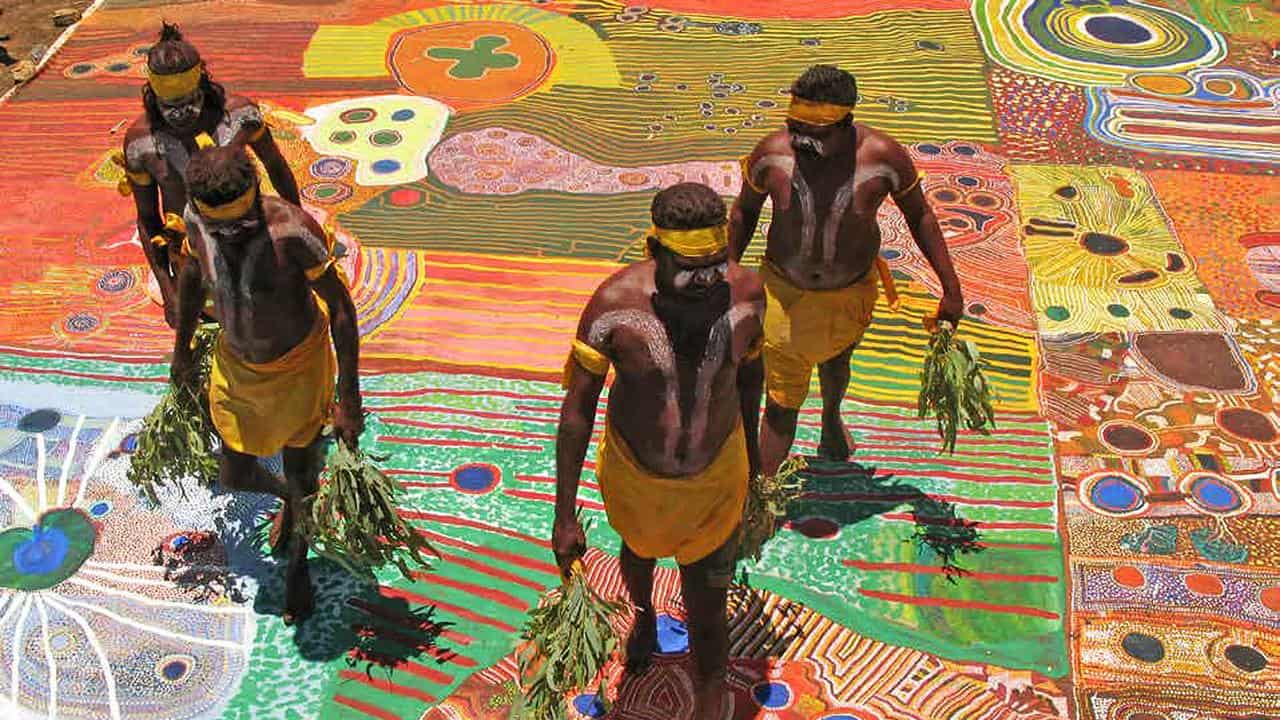
Henry Reynolds, considered one of Australia’s leading authorities on Indigenous history, told AAP FactCheck dot painting originated in older practices done on the ground with plants and stones in the form of maps.
"When Europeans introduced them to painting, using paints on boards, then obviously it changed and I think dot painting was a reasonable way in which they transferred the map-making into painting," Professor Reynolds said.
The post's claim that Mr Dingo and Mr Walley invented the Welcome to Country ceremony to greet Maori performers in 1976 is also misleading.
While they are attributed for introducing the modern form of the ceremony, AAP FactCheck previously found the practice is grounded in similar ceremonies dating to pre-colonial times.
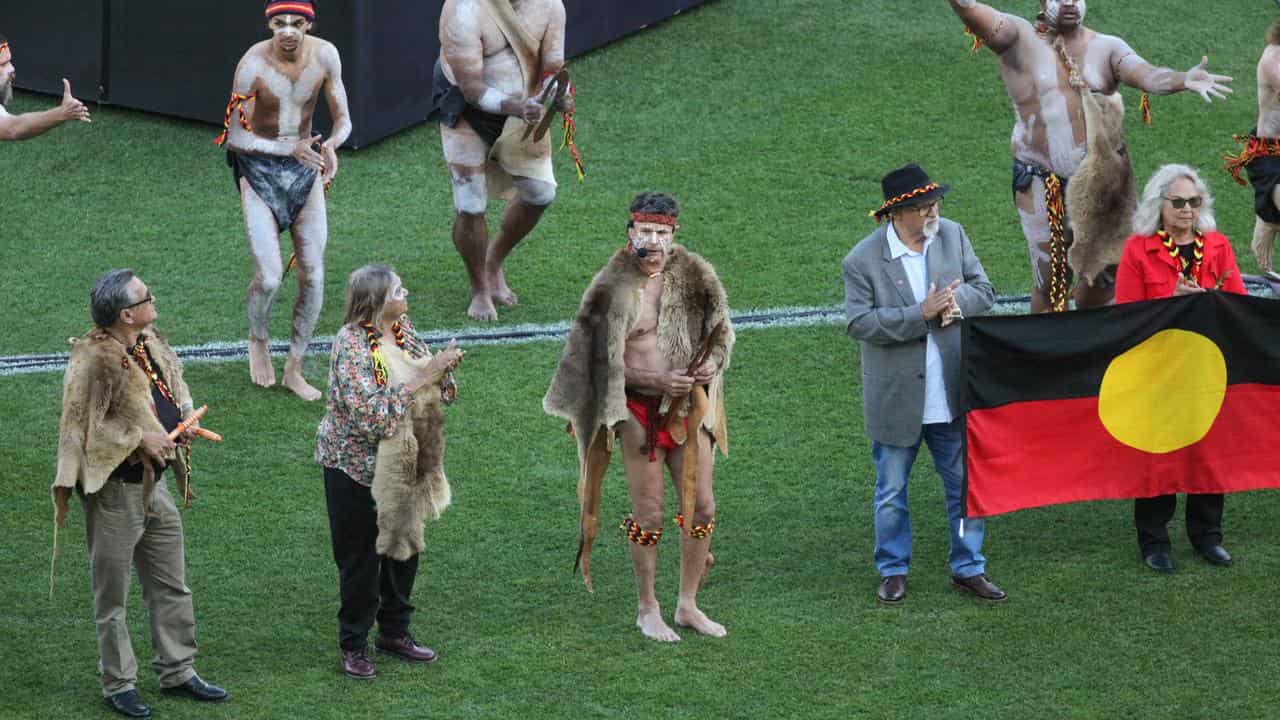
Francesca Merlan, a professor of anthropology at Australian National University, argues in a research paper that "there is no doubt that some elements of Welcomes (such as dance) have long been in use among groups of Aboriginal people".
Prof McKenna said they did not invent the idea of welcome and in traditional Aboriginal cultures there were specific protocols and rituals when leaving one's country and entering another clan's territory.
"Welcoming the visitor to country was often part of this process and the practices associated with greeting outsiders varied from nation to nation," he said.
Prof Reynolds said one of the first expeditions into country from the colonial settlement in Sydney involved local Indigenous people who would introduce them to the next mob in a formal ceremony.
"They were small sovereign nations and diplomacy meant that you had to go and wait until you were invited to come in - and then if you were accepted, you were welcomed to country," he said.
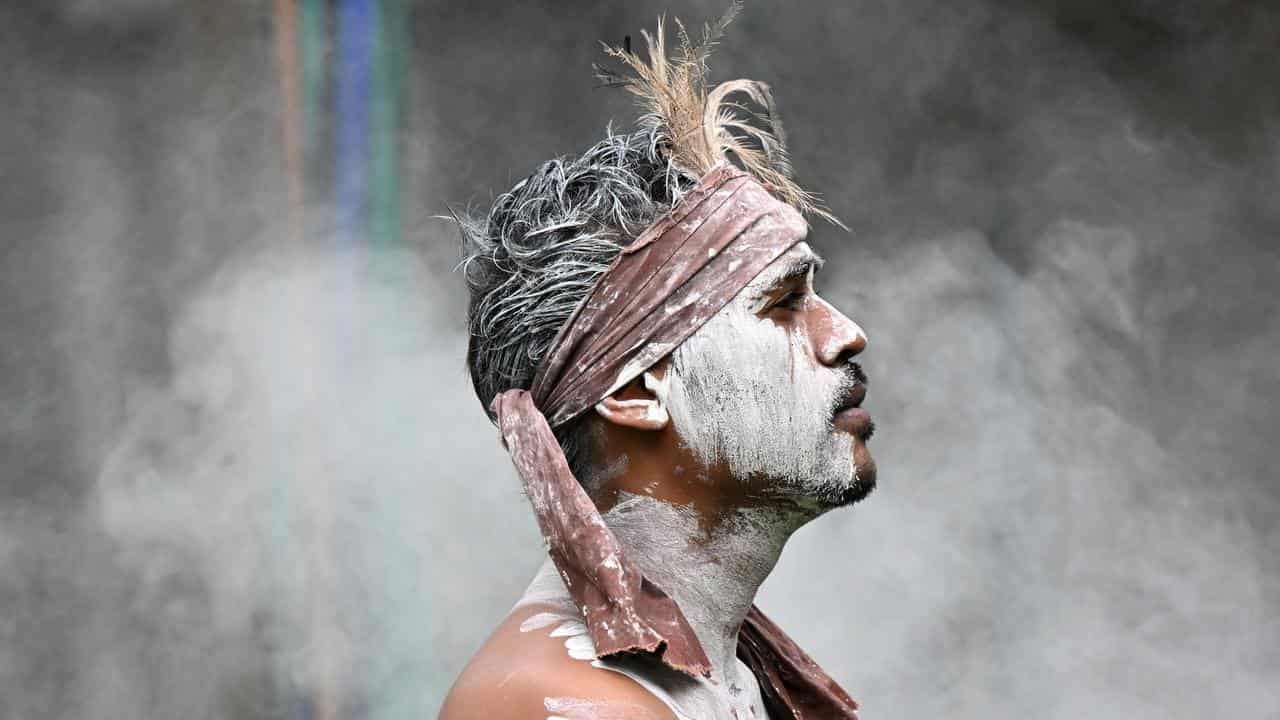
The post also claims there is no word for Welcome to Country "like the Maori's Haka".
Prof McKenna said this was "patently nonsense" because "there are hundreds of Aboriginal languages, not one".
Prof McKenna and Prof Reynolds both said the claim that smoking ceremonies were a recent invention was also false.
"There are certainly references to them in the 19th century," Prof Reynolds said.
"But the problem with all 19th-century accounts is there's no actual picture of exactly what they mean by the various dances and smoking ceremonies, but they certainly were carried out."
The University of Melbourne's Indigenous Knowledge Institute states smoking ceremonies have been performed for thousands of years for a variety of reasons, including to treat sickness.
The Verdict
The claim school teacher Geoffrey Bardon invented Aboriginal dot painting in 1971 is false.
While he was the first to paint on canvas, experts told AAP FactCheck that dot painting has been part of Aboriginal culture for thousands of years.
The post also features several other false or misleading claims, including that Welcome to Country ceremonies were first carried out in the 1970s and that smoking ceremonies are a modern invention.
False – The claim is inaccurate.
AAP FactCheck is an accredited member of the International Fact-Checking Network. To keep up with our latest fact checks, follow us on Facebook, Twitter and Instagram.
